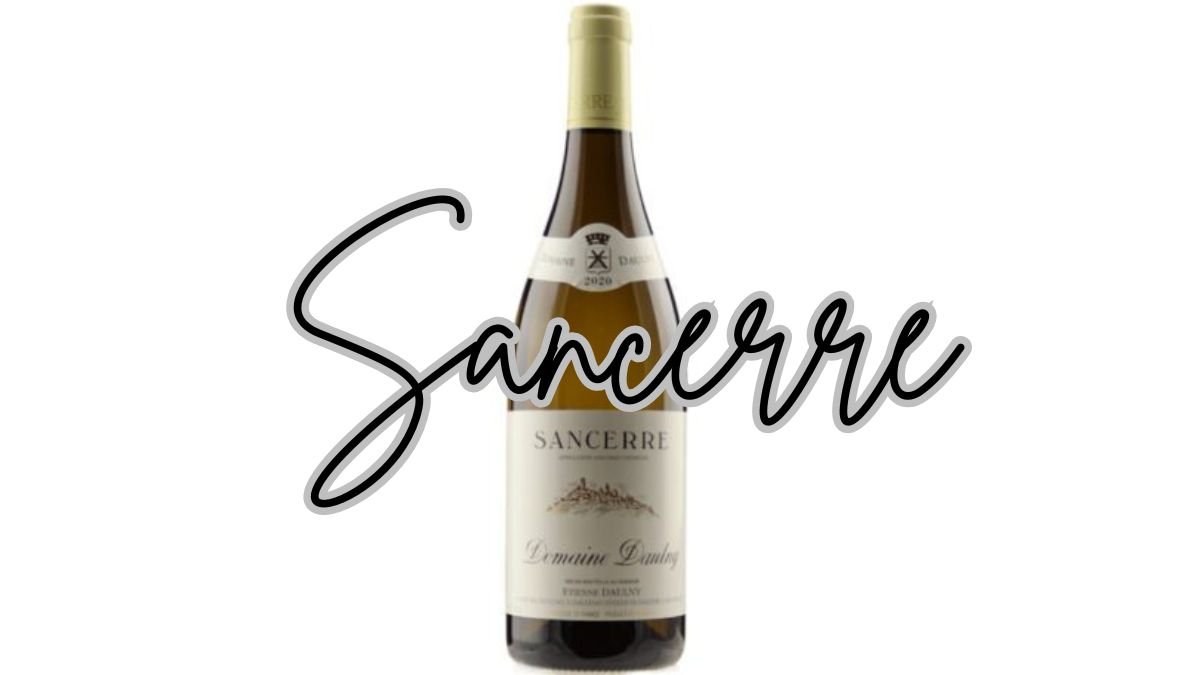Sancerre is one of the most iconic and revered white wines of France, known for its crisp, refreshing taste and its vibrant expression of the terroir of the Loire Valley. With its popularity soaring globally, this wine offers a unique drinking experience that combines history, tradition, and modern winemaking techniques. Whether you’re a seasoned connoisseur or a beginner wine enthusiast, this guide will delve into the fascinating world of Sancerre, covering everything from its origin to its characteristics, food pairings, and more.
What is Sancerre?
Sancerre is a dry white wine produced in the Sancerre appellation of the Loire Valley in central France. Made primarily from the Sauvignon Blanc grape, Sancerre is known for its crisp acidity, fresh citrus notes, and grassy aromas. It is one of the most celebrated wines from the Loire region, offering a perfect balance between elegance and freshness.
While Sauvignon Blanc is the grape variety most commonly associated with Sancerre, red and rosé wines from the same region are made from the Pinot Noir grape, although they are less well-known internationally. The region’s unique combination of soil types, climate, and winemaking techniques makes Sancerre a wine that reflects both the terroir and the skill of the winemaker.
The Origin of Sancerre: A Glimpse into History
The Sancerre wine region has a rich history that dates back to the Roman era. It is believed that the first vineyards were planted in the area over 2,000 years ago, with winemaking becoming a significant part of the local culture by the 9th century. By the 14th century, Sancerre had gained recognition as a high-quality wine, especially among the French nobility.
Throughout history, Sancerre has seen periods of growth and decline. The wine’s global popularity surged in the 20th century, particularly after the 1970s, when a surge of demand for French wines in the U.S. led to a renewed interest in Sancerre. Today, it remains one of the most sought-after white wines worldwide, with its fresh and vibrant profile appealing to wine lovers across the globe.
Characteristics of Sancerre Wine
Sancerre is most commonly associated with white wines made from the Sauvignon Blanc grape, but understanding the specific characteristics of this wine requires a deeper dive into the elements that define it. From the soil to the climate, here’s what you can expect from a glass of Sancerre:
1. Flavor Profile
- Aromas: Sancerr’e wines often have aromas of citrus fruits such as lemon, lime, and grapefruit. You might also detect hints of green apple, gooseberry, and occasionally floral notes like elderflower. On the palate, these aromas translate into a crisp, zesty acidity that provides a refreshing mouthfeel.
- Taste: Sancerr’e is known for its dry, vibrant flavor profile. The wine offers crisp acidity that balances well with its fruit-forward taste. In some cases, you might notice a mineral or flinty finish, which is indicative of the region’s unique soil composition, particularly the Kimmeridgian limestone soil that characterizes much of the vineyard landscape in Sancerre.
2. Color and Appearance
Sancerre wines typically appear pale straw to light gold in color. Their clarity is usually excellent, thanks to the careful winemaking process, with the wine often showing a slight greenish tint in younger bottles.
3. Acidity
One of the defining features of Sancerr’e is its high acidity. This attribute gives the wine its refreshing nature and makes it an excellent pairing with food. The acidity also allows Sancerr’e to age well, although most of the wines are best enjoyed while young and fresh.
4. Alcohol Content
Most Sancerre wines have an alcohol content that ranges from 12.5% to 13.5%, which is relatively moderate. This balance of alcohol allows the wine to showcase its natural crispness and freshness without being overpowering.
Terroir: How Geography Shapes Sancerre
The terroir of the Sancerre region plays a crucial role in shaping the wine’s flavor and characteristics. The vineyards are located on the banks of the Loire River, with the hillsides providing an ideal microclimate for growing Sauvignon Blanc. The soil composition is diverse but predominantly composed of Kimmeridgian limestone, flint, and clay.
- Limestone and Clay Soils: These soils contribute to the mineral character and acidity of Sancerre wines, providing a crisp, clean finish.
- Flint: The presence of flint in the soil imparts a distinctive smokiness and minerality to the wine, which is often described as “gunflint” on the nose. This smoky quality is a hallmark of many wines from Sancerr’e and adds to its complexity.
- Climate: The region experiences a continental climate with cold winters and warm summers, making it an ideal environment for Sauvignon Blanc to thrive. The Loire River helps moderate temperatures, ensuring that the vines receive the right amount of warmth during the growing season.
Sancerre Wine Styles: White, Red, and Rosé
While white Sancerre is the most widely known, the region also produces red and rosé wines. These wines are made from the Pinot Noir grape and offer a contrast to the crisp, aromatic whites.
1. White Sancerre
The quintessential Sancerr’e wine, made from Sauvignon Blanc, is known for its bright acidity, fresh fruit flavors, and herbal notes. These wines are typically best enjoyed young, although some higher-end producers offer Sancerres that can age gracefully for a few years.
2. Red and Rosé Sancerre
Red and rosé wines from Sancerr’e are made from Pinot Noir. The red Sancerr’e typically has flavors of red berries like cherry, strawberry, and raspberry, along with earthy undertones. The rosé wines are light and refreshing, with similar fruit-forward profiles but with the added benefit of a refreshing. Crisp acidity that mirrors the white wines of the region.
Best Food Pairings with Sancerre
Sancerre’s high acidity and refreshing profile make it an excellent wine for pairing with a variety of dishes. Here are some top food pairing suggestions for different types of Sancerre wines:
White Sancerre Pairings:
- Seafood: Sancerr’e pairs beautifully with oysters, scallops, and other shellfish. The wine’s bright acidity complements the brininess of the seafood.
- Goat Cheese: Sancerre is famously paired with Crottin de Chavignol, a local goat cheese from the Loire Valley. The sharpness of the wine enhances the creaminess of the cheese.
- Salads and Fresh Vegetables: The wine’s crisp acidity also makes it a perfect match for green salads, asparagus, and fresh herbs.
Red and Rosé Sancerre Pairings:
- Charcuterie: A light red or rosé Sancerre pairs wonderfully with cured meats like prosciutto, salami, and pâté.
- Grilled Chicken: A rosé Sancerr’e can balance well with the subtle flavors of grilled chicken or roasted poultry.
- Grilled Vegetables: The acidity of the wine cuts through the charred flavors of grilled vegetables. Making it an excellent choice for vegetarian dishes.
How to Serve Sancerre
Sancerre is best served chilled but not ice-cold. Aim for a serving temperature of around 45°F (7°C) for white wines. And slightly warmer for red and rosé wines at around 55°F (13°C). Serving the wine too cold can mute its aromas and flavors. While serving it too warm can make it taste overly alcoholic and unbalanced.
Sancerre vs. Other Sauvignon Blanc Wines: A Comparison
For wine enthusiasts looking to explore beyond Sancerre, Sauvignon Blanc is produced in several regions around the world. Here’s a quick comparison to highlight what makes Sancerre stand out:
| Characteristic | Sancerre (Loire Valley) | Marlborough (New Zealand) | Napa Valley (USA) |
| Grape Variety | Sauvignon Blanc | Sauvignon Blanc | Sauvignon Blanc |
| Climate | Continental with river influence | Maritime with cool climate influence | Warm, Mediterranean-like climate |
| Flavors | Citrus, green apple, gooseberry, minerality | Tropical fruits, passion fruit, lime | Citrus, melon, and tropical fruits |
| Acidity | High acidity, crisp finish | High acidity, with more tropical flavors | Moderate acidity, rounder finish |
| Terroir Influence | Flint, limestone soils | Sandy soils, alluvial plains | Diverse, with warmer soil conditions |
| Aging Potential | Excellent for aging (1-5 years) | Best enjoyed young | Best enjoyed young |
Conclusion
Sancerre remains one of the most respected white wines in the world. With its unique blend of freshness, minerality, and vibrant acidity. Whether you are sipping it alongside seafood, goat cheese, or a simple green salad. This wine offers a delightful drinking experience that reflects the essence of the Loire Valley. From its historical roots to its modern-day acclaim, Sancerre continues to captivate wine enthusiasts and collectors around the globe. If you haven’t yet discovered this iconic wine, now is the perfect time to explore the crisp and elegant world of Sancerr’e.











